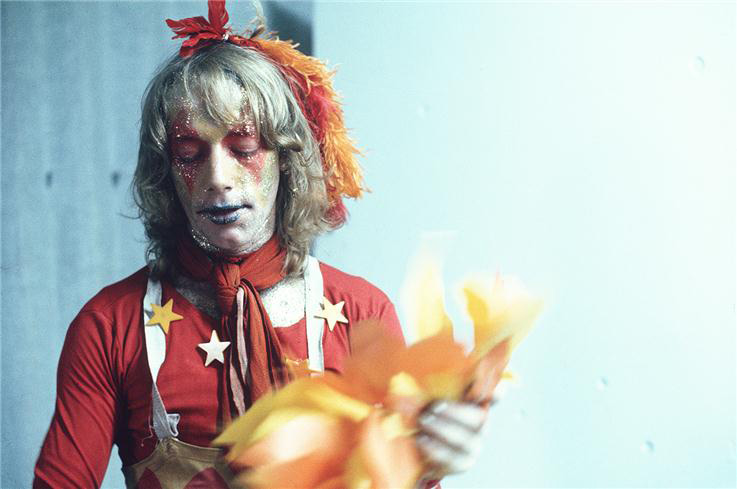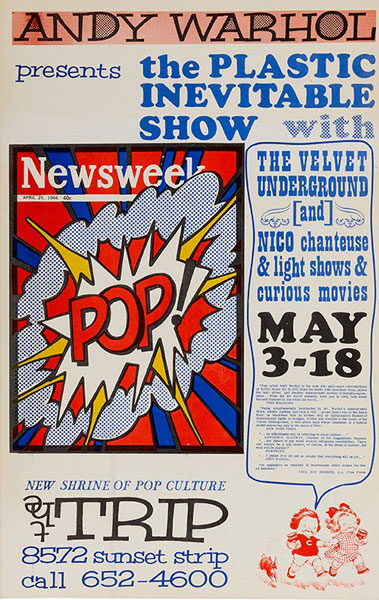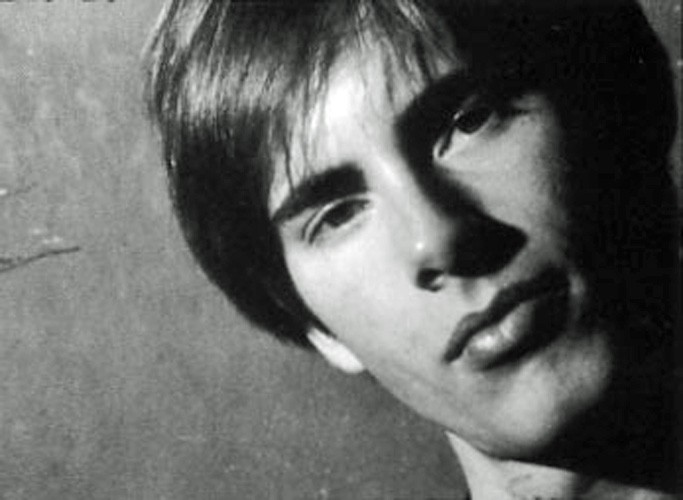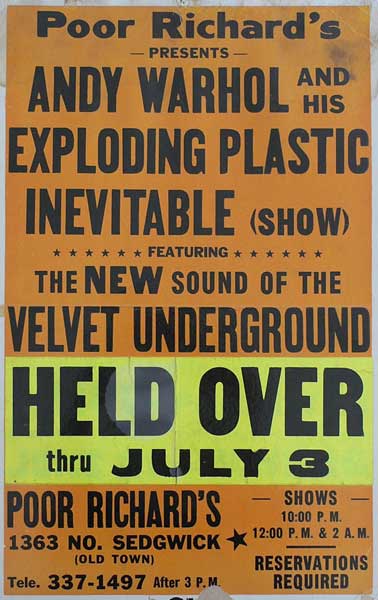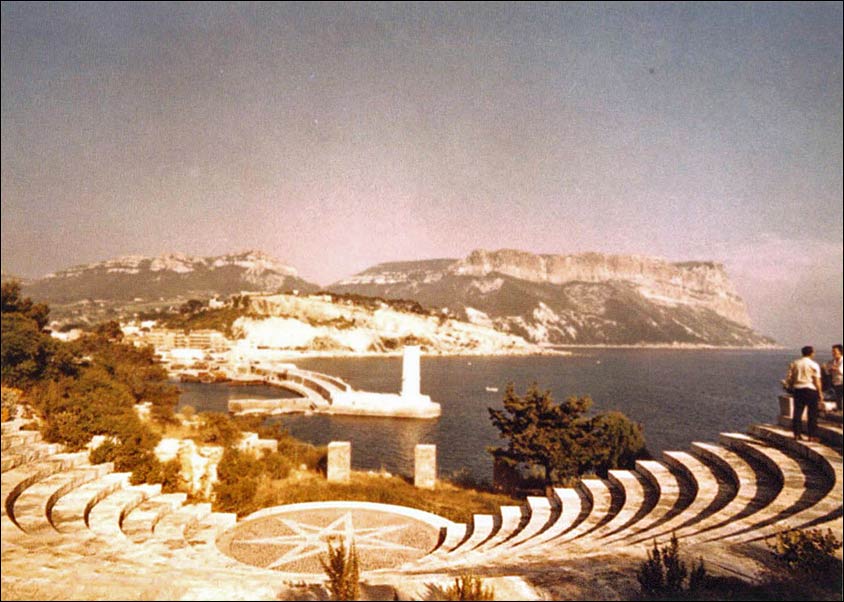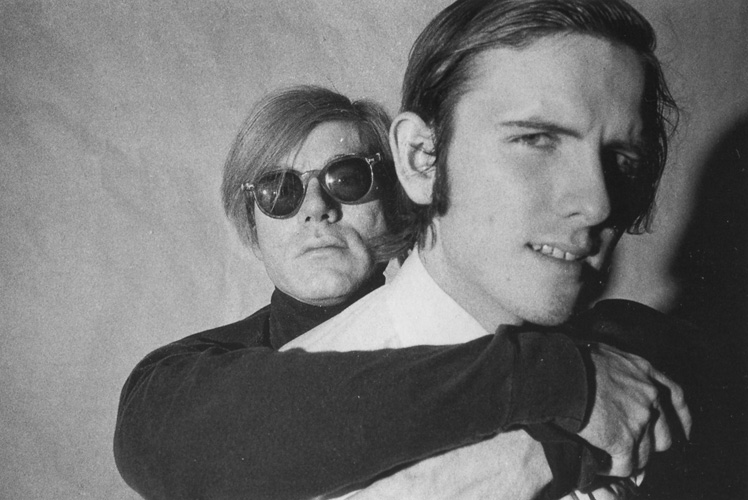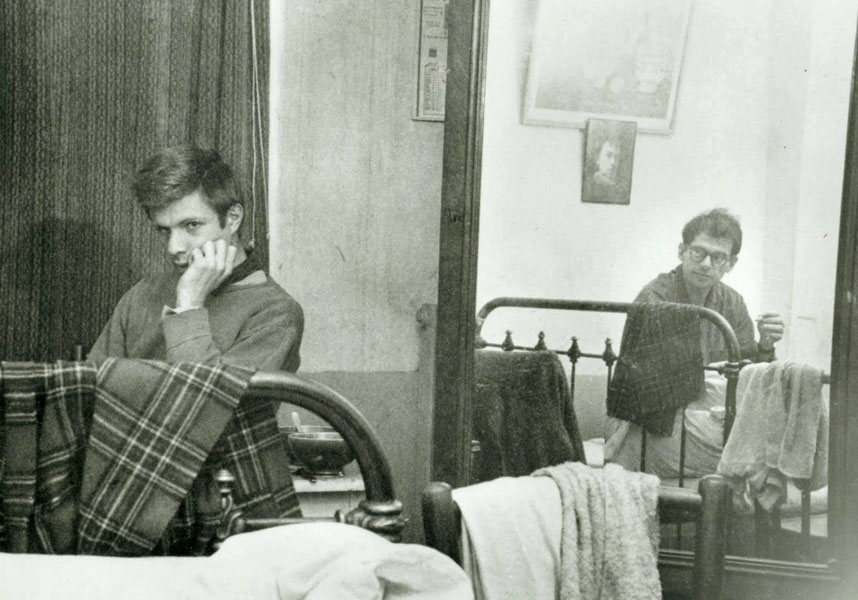1966
1928 - 1959 - 1960 -1962 - 1963 - Jan - May 1964 - June-December 1964 - 1965 - 1966 - 1967 - 1968 -1969 - 1970 - 1974 - 1975 - 1979 - 1980s+
JAN. 1966: NICO MOVES TO NEW YORK.
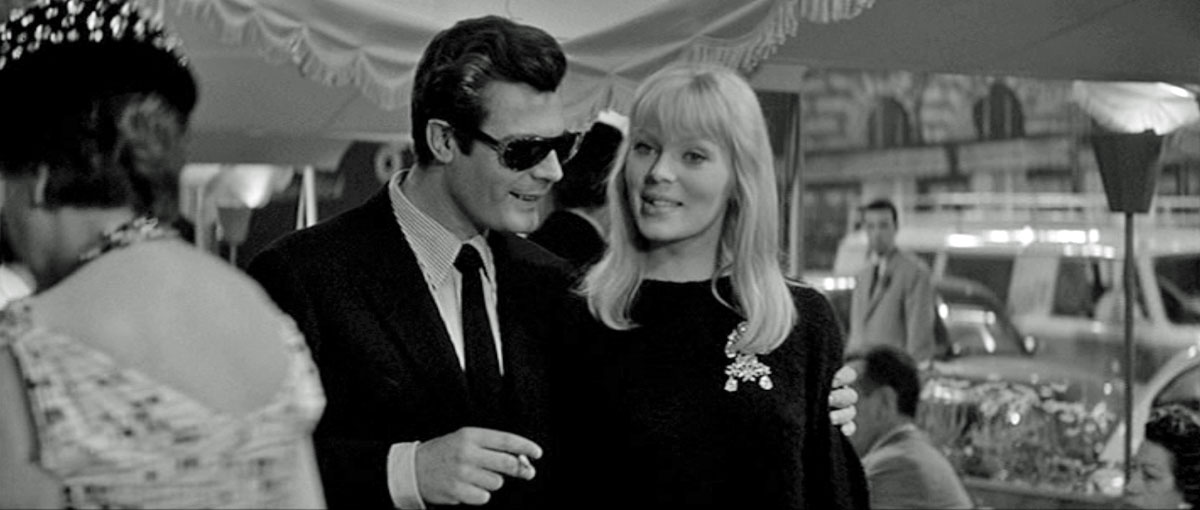
Nico with Marcello Mastroianni on the set of La Dolce Vita
In New York, Nico continued her modeling career, signing up with the Ford Model Agency. (DB221)
JAN. 13, 1966: ANDY WARHOL TAKES THE VELVETS TO PSYCHIATRISTS.
Andy Warhol was invited to speak at the annual banquet of the New York Society for Clinical Psychiatry at the Delmonico Hotel. He brought along the VELVETS and other factory regulars. JONAS MEKAS and BARBARA RUBIN filmed the event. It was the first time that NICO performed publicly with the band.
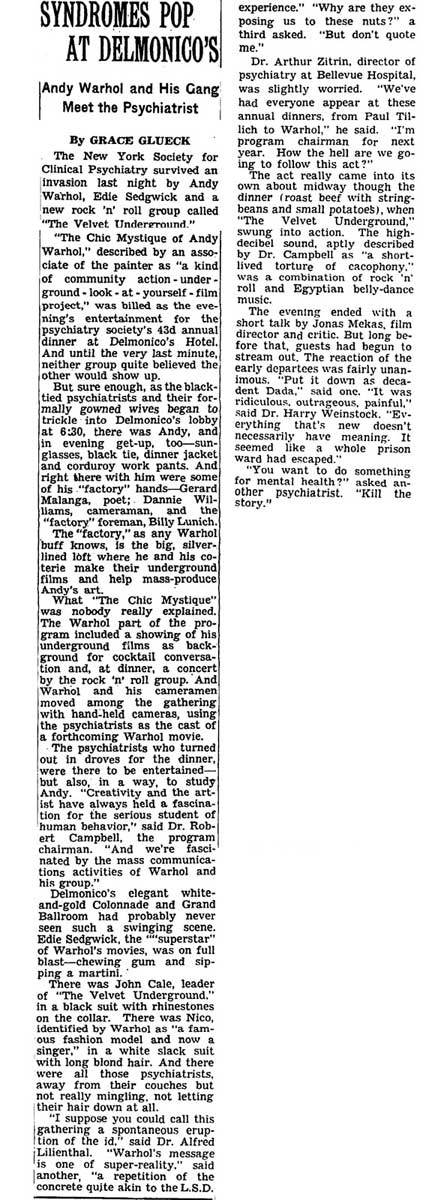
New York Times, January 14, 1966
From Popism:
“The second the main course was served, the Velvets started to blast and Nico started to wail. Gerard and Edie jumped up on the stage and started dancing, and the doors flew open and Jonas Mekas and Barbara Rubin with her crew of people with camera and bright lights came storming into the room and rushing over to all the psychiatrists asking them things like:
What does her vagina feel like?
Is his penis big enough? Do you eat her out?
Why are you getting embarrasssed? You’re a psychiatrist; you’re not supposed to get embarrassed....While the crews filmed and Nico sang her Dylan song, Gerard noticed ... that Edie was trying to sing, too, but ... it was obvious she didn’t have a voice.” [Gerard] “always looked back on that night as the last time she ever went out with us in public, except for a party here and there. He thought that she’d felt upstaged that night, that she’d realized Nico was the new girl in town.” (POP147)
JAN. 21, 1966: "THE HOMOSEXUAL IN AMERICA" IS PUBLISHED IN TIME MAGAZINE.
From "Essay: The Homosexual in America" (Time magazine, January 21, 1966):
"On Broadway, it would be difficult to find a production without homosexuals playing important parts, either onstage or off. And in Hollywood, says Broadway Producer David Merrick, 'you have to scrape them off the ceiling.' The notion that the arts are dominated by a kind of homosexual mafia—or 'Homintern,' as it has been called—is sometimes exaggerated, particularly by spiteful failures looking for scapegoats. But in the theater, dance and music world, deviates are so widespread that they sometimes seem to be running a kind of closed shop. Art Critic Harold Rosenberg reports a 'banding together of homosexual painters and their nonpainting auxiliaries'...
Homosexual ethics and esthetics are staging a vengeful, derisive counterattack on what deviates call the 'straight' world. This is evident in 'pop,' which insists on reducing art to the trivial, and in the 'camp' movement, which pretends that the ugly and banal are fun."
JAN. 31, 1966: GERARD MALANGA READS DROP-OUT POEMS.
Gerard Malanga did a poetry reading at The Folklore Center of his "Debbie High School Drop-Out Poems".
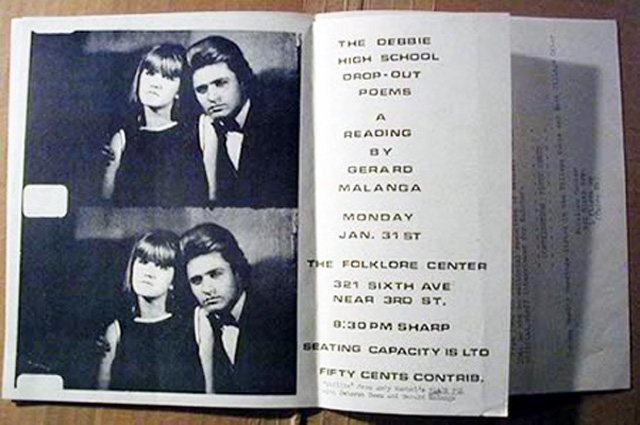
1966: ANDY WARHOL FILMS THE VELVET UNDERGROUND.
In addition to the Warhol footage of the Velvet Underground, other filmmakers also filmed the band during this period. Rosalind Stevenson filmed them in their apartment in 1965 and Jonas Mekas/Barbara Rubin filmed the Psychiatrists' Convention on January 8, 1966. They were also filmed at the Balloon Farm (previously the Dom) in October 1966 and Ron Nameth filmed them playing at Poor Richard's in Chicago in June 1966. (UT123)
Victor Bockris:
"January to April 1966 was the golden period for the Velvet Underground and Andy Warhol. After the psychiatrist's convention, Warhol shot a scintillating film of the band rehearsing at the Factory, SYMPHONY OF SOUND, which remains the single best visual record of the Velvet Underground. They also recorded sound tracks for two of Warhol's best movies shot at the beginning of the year, HEDY and MORE MILK YVETTE." (LR108)
According to Stephen Koch, More Milk Yvette was filmed in November of 1965. (SG147) Hedy was shot in February 1966 - inspired by Hedy Lamarr's arrest for shoplifting which appeared in the press on January 29, 1966. (BN68)
Lou Reed on Andy Warhol:
"The thing is that Andy works very hard. One of the things you can learn from being at the Factory is if you want to do whatever you do, then you should work very, very hard. If you don't work very hard all the time, well then nothing will happen. And Andy works as hard as anybody I know... Whenever he'd ask me how many songs I'd written that day, whatever the number was Andy would say, 'you should do more.'" (UT128)
The filming of THE VELVET UNDERGROUND AND NICO: A SYMPHONY OF SOUND was broken up by the NYC police after complaints about the noise. (UT34)
to filmography
1966: LOU REED WRITES FEMME FATALE ABOUT EDIE SEDGWICK.
Lou Reed:
"Andy said I should write a song about Edie Sedgwick. I said 'Like what?' and he said, 'Oh, don't you think she's a femme fatale, Lou?' So I wrote 'Femme Fatale' and we gave it to Nico." (LR107)
FEBRUARY 6, 1966: MARY WORONOV SCREEN TEST IS SHOT.
There are seven Woronov Screen Tests listed in the Andy Warhol film catalogue raisonne although only four originals have been found. Of the originals, only two - ST357 and ST358 - are of Mary only. Two others - ST360 and ST361 - are of a poet, George Millaway, and Mary Woronov together. (Warhol also filmed three Screen Tests of Millaway on his own in 1966. (AD133)) The three Screen Tests featuring Woronov for which the original footage has not been found are two Screen Tests which also include Gerard Malanga and another with Mary on her own. All three were included in Screen Test Poems, a collaboration between Warhol and Malanga which premiered at Cornell University in May 1966 (see below).
Mary had gotten involved with the Factory through a friend at Cornell, David Murray, who was the subject of a Screen Test in 1965. Murray introduced Mary to Gerard Malanga and Gerard filmed her walking across a bridge and called the film, Mary on Triphammer Bridge. She met him again when her art class visited the Factory on a field trip. He told her that Andy was making SCREEN TESTS and suggested they do one of her. She stayed at the Factory while her classmates went back to Cornell without her. When she returned to Cornell, she started taking the Greyhound bus to New York as often as possible. She eventually left Cornell permanently when Andy invited her on a trip to California with other Factory regulars in 1966. (MW15) (In October 2008, during a panel discussion in the Purcell Room of the Southbank Centre in London, Mary confirmed that her and Gerard had a brief sexual relationship.)
FEBRUARY 1966: MARY WORONOV APPEARS IN HEDY.
After leaving Cornell, Mary Woronov moved in with her parents in Brooklyn until eventually moving into an apartment on St. Marks that she shared with Jane, a friend from Cornell. (MW87) Her first full-length Warhol film was HEDY in which Mario Montez (a male in real-life) played Hedy and Mary Woronov (a female in real life) played the police woman who arrested Hedy for shoplifting. The film was based on press reports of the real Hedy Lamar being arrested for shoplifting.
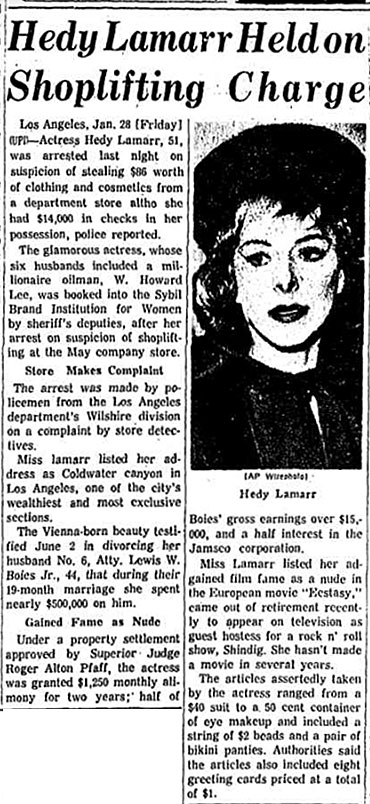
Chicago Tribune, January 28,1966, front page
HEDY is titled The 14 Year Old Girl in the American Film Institute's catalogue and is described in the following way:
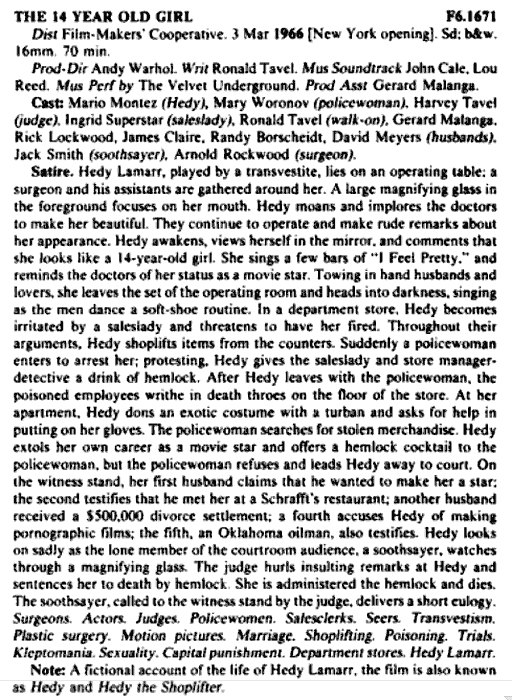
American Film Institute's listing for HEDY (or, as they titled it, The 14 Year Old Girl.)
to filmography
FEBRUARY 8 - 13, 1966. ANDY WARHOL GETS UPTIGHT.
Two ads from the same issue of the Village Voice, advertising "Andy Warhol Up-Tight:"
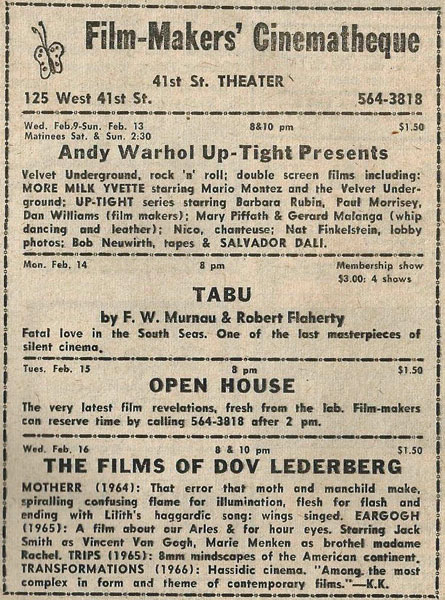
Village Voice ad, February 10, 1966

Village Voice ad, February 10, 1966 (Source: "Andy Warhol Films: Newspaper Adverts 1964 - 1974," here.)
Nico:
"They also played the record of Bob Dylan's song, I'll Keep It With Mine, because I didn't have enough to sing otherwise. I had to stand there and sing along with it. I had to do this every night for a week. It was the most stupid concert I have ever done." (LR109)
Sterling Morrison:
"We most certainly did not want to be compared with Bob Dylan, or associated with him. We did not want to be near Bob Dylan, either physically or through his songs. When Nico kept insisting that we work up I'll Keep It With Mine, for a long time we simply refused. Then we took a long time to learn it (as long as we could take). After that, even though we knew the song, we insisted that we were unable to play it. When we finally did have a go at it on stage, it was performed poorly. We never got any better at it either, for some reason." (UT53)
10 FEBRUARY 1966: ANDY WARHOL TAKES OUT AN AD.
Andy Warhol took out an ad in the Village Voice offering to endorse just about everything:

(Source: Andy Warhol Films: Newspaper Adverts 1964 - 1974) here
FEB. 13, 1966: EDIE SEDGWICK APPEARS IN THE NEW YORK TIMES.
Edie Sedgwick appeared in photographs, posing with ANDY WARHOL and CHUCK WEIN in the New York Times magazine. (AF201)
c. 3RD OR 4TH WEEK OF FEB. 1966: EDIE SEDGWICK LEAVES ANDY WARHOL.
Edie Sedgwick left Andy Warhol after a public argument at the Ginger Man restaurant about money and her lack of role in the Velvet Underground. She left Andy to hang around with BOB DYLAN who, according to writer Victor Bockris, had an extreme drug problem with amphetamine.” (L&D244)
Although most accounts place the argument at the Gingerman, Gerard Malanga has written about an argument that took place at "a crowded table at Maxwell Plum (present were Andy, Paul Morrissey, Donald Lyons, Ingrid Superstar, Barbara Rubin, Nico, Chuck Wein, Lou Reed and John Cale)." (GMW117)
According to Malanga, Edie, unwilling to pick up the tab as was her usual habit, confronted Warhol about money for the films she had appeared in. Warhol protested that he wasn't making any money with the films and that she had to be patient. At one point she got up to make a phone-call, then returned to the table shortly thereafter and left the restaurant. (GMW117)
FEBRUARY 23 - 28, 1966: ANDY WARHOL'S KISS IS SHOWN AT THE BRIDGE.
The Bridge was the cinema mentioned by Walter Cronkite on CBS News in a segement about underground film that included a brief appearance by the Velvet Underground. (Go to end of 1965). Other films on the bill were: Doomshow by Ray Wisniewski, Loving by Stan Brakhage, Lafcadio by Jean Beranger (described in the Village Voice ad as "A homosexual dance of life and death"), Meter Maiden by Matt Hoffman and Hard Swing by Michael Putnam. (Village Voice ad, February 24, 1966)
MARCH 3, 1966: KITCHEN, STARRING EDIE SEDGWICK, PREMIERES AT THE FILM-MAKERS' CINEMATHEQUE. (DB217)
According to David Bourdon, Kitchen premiered on this date. At the time, Jonas Mekas was using the 41st St. Theater as his "Cinematheque" (See "Jonas Mekas and the Film-Makers' Cinematheque," p. 3) The ad also mentions a Warhol benefit for Ronald Tavel, Warhol's screenwriter who wrote Kitchen and Mario Montez who appears in The 14 Year Old Girl (aka Hedy) which is also being screened. Presumably, the "CBS Interview with Stan Brakhage" mentioned in the ad refers to the Walter Cronkite segment on CBS News which also included Jonas Mekas and the Velvet Underground. (Go to 1965 and scroll to the bottom.)
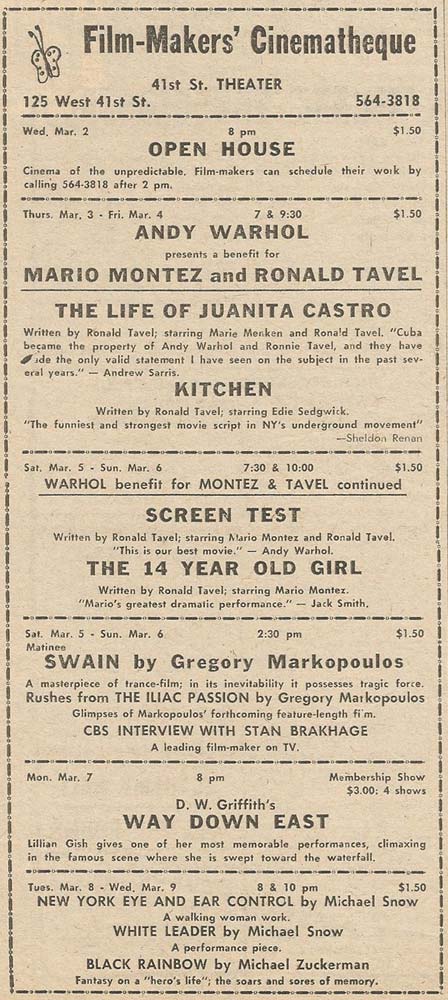
Village Voice ad, March 3, 1966 (Source: "Andy Warhol Films: Newspaper Adverts 1964 - 1974," here.)
MARCH 9, 1966: UP-TIGHT WITH AND WARHOL AND THE VELVET UNDERGROUND AT THE ANN ARBOR FILM FESTIVAl.
Andy Warhol took The VELVET UNDERGROUND and a small entourage, including Gerard Malanga and Ingrid Superstar, to appear at the Fourth Ann Arbor Film Festival.
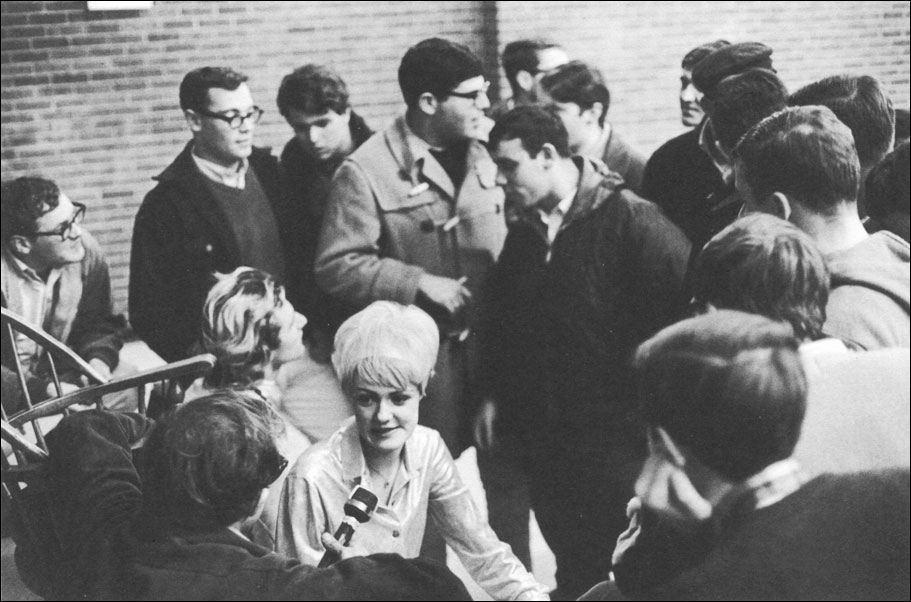
Ingrid Superstar being interviewed in Ann Arbor, with Gerard Malanga behind her (Photo: Nat Finkelstein, 1966)
The Saturday night event was advertised in the Michigan Daily as "Up-Tight with Andy Warhol and the Velvet Underground."

Two ads from the Michigan Daily newspaper, March 11, 1966 (L) and March 12, 1966 (R) (Source: Alfredo Garcia, "the inevitable world of The Velvet Underground," 2011, here)
A review of "Up-tight" appeared in the Detroit Free Press:

Detroit Free Press, March 15, 1966 (Source: Source: Alfredo Garcia, "the inevitable world of The Velvet Underground," 2011, here)
Warhol's entourage included the counter-culture journalist, John Wilcock, who would later write The Autobiography and Sex Life of Andy Warhol, by John Wilcock and a Cast of Thousands, consisting of interviews with many of Warhol's superstars.
John Wilcock:
"The eleven member Warhol group (supplemented by accompanying cars) had rented a microbus for the 1,500 mile round-trip to Ann Arbor ($50 per day plus 10 cents per mile) and although it offered some of the comforts of home - including a toilet that, like the one in the 47th Street Factory, didn't work - it proved to be far from the most reliable mode of transportation. The most chaotic moments came on the way back when a stop was made in the parking lot of a pop art monstrosity called the White Hut Superking for everybody to order hamburgers. Even before Nico, blonde locks falling about the shoulders of her black leather jacket, had brought the bus to a halt, a police patrol car came snooping around to see what else it contained." (UT40)
MARCH 1966: BETSEY JOHNSON HAS A PARTY.
Betsey Johnson hired Warhol to stage a party at Paraphernelia, the flagship store of Pilgrim Clothes who had hired Johnson to design the clothes.The Velvet Underground, who had returned to New York after playing Ann Arbor, performed at the party. Nat Finkelstein took photos.
Nat Finkelstein:
"We staged a party in a fishbowl, a store window on Madison Avenue. Crowds gathered... the idea was that everybody who saw the party would buy clothes there. The girls showed the new fashion while they were dancing to the Velvet's music." (NF85)
MARCH 30, 1966: HOLLY WOODLAWN MEETS JACKIE CURTIS.
Candy Darling and Holly Woodlawn went to Candy’s friend Seymour’s house in the West Village to watch Barbara Streisand’s TV special Color Me Barbara on Seymour's colour tv. Jackie Curtis was there - “an aspiring actor/playwright who worked as an usher at the Winter Garden Theater, where Streisand was starring in Funny Girl.” (HW76) Curtis wasn't in drag at this point, although Holly and Candy were.
APR. 2 - 27, 1966: ANDY WARHOL'S SECOND SHOW AT CASTELLI.
Andy Warhol's second show at the Leo Castelli gallery included the Cow wallpaper and the floating silver pillows. (L&D503/UW39)
Ronnie Cutrone:
"Andy said he wanted to end his painting career with those silver pillows, to let them fly away from the rooftop, but they didn't really fly away. It was a grand gesture; he was a master of the grand gesture." (UW59)
The Cow wallpaper and silver pillows did not sell - the pillows deflated, the wallpaper peeled and the critics were puzzled - but as an art 'happening' the show was successful. (UW39/L&D249) According to Victor Bockris, the free-floating helium filled silver pillows were originally designed for the set of a Merce Cunningham dance piece called Rain Forest. (L&D249)
Billy Name:
"The pillows really stemmed out of the experiments in art and technology of the day. Andy was introduced to Billy Kluver, who worked for Bell Labs. The first satellite called Telestar was his creation. He told us about mylar balloons. There was mylar that you could make into any shape you wanted with a heat presser, so we said, 'Let's do something with that'." (UW39)
The image for the cow wallpaper came from a Dairy Association of America brochure.
Billy Name:
"The Cow wallpaper started with a show that was going to be in the Whitechapel in London. The show never happened, but Andy had asked Henry Geldzahler what he should paint for the show. And Henry said, 'Well, one of the favorite traditional things in English painting is bovine pastorals.' So out of of the idea of a bovine pastoral scene came the Cow wallpaper which was supposed to end up as that entire exhibiton... The multiple thing... was a really strong beat in New York. For instance, I remember going with Andy to an avant-garde experimental music concert and I remember being in the elevator with John Cage talking to Andy about Erik Satie, the composer. In the music, instead of just assuming the base beats are always there, it was a time to recognize the basis and see it. To repeat the base so it becomes recognized before you even get into embellishment." (UW39)
EASTER SUNDAY, 1966: EDIE SEDGWICK MAKES HER FIRST NON-WARHOL FILM. (EDIE285)
Bob Neuwirth:
"She [Edie Sedgwick] never made a film with Dylan. After Edie left Warhol, I was actually the first one to make a film with her. We made it on Easter Sunday in Eric Dolphy's old loft near the Fulton Fish Market - a Chaplinesque, satirical movie of Edie making breakfast and ending up with her wearing a nine-thousand-dollar leopard-skin coat and walking her huge rhinoceros, that big footstool of hers outfitted with four roller skates, up Fifth Avenue in the Easter Parade, pulling the rhino along behind her on a leash. It was very early in the morning. We'd been shooting since daylight. At one point on Park Avenue she tied her rhino to a fire hydrant, and the police, as a joke, gave it a ticket. I have footage of them giving her a ticket for parking her four-wheeled rhino, or actually her sixteen wheeled rhino." (EDIE285)
APRIL 1966: THE EXPLODING PLASTIC INEVITABLE PREMIERES AT THE "OPEN STAGE."
On March 31, 1966, the Village Voice advertised "the first Erupting Plastic Inevitable:"
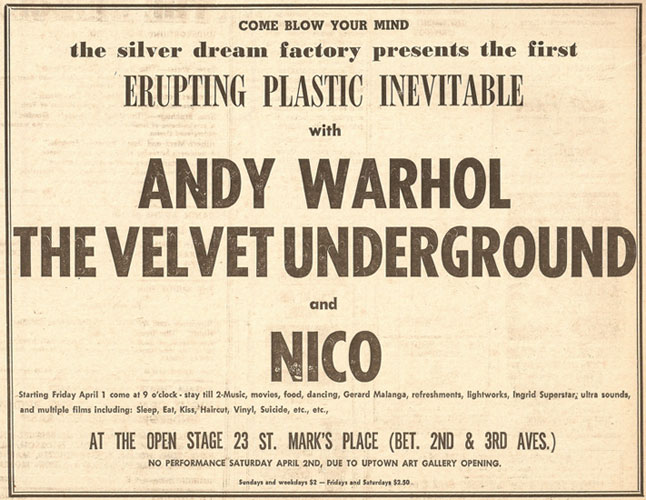
"Erupting" Village Voice ad March 31, 1966
In the following issue of the Voice event had changed "Erupting" to "Exploding:"
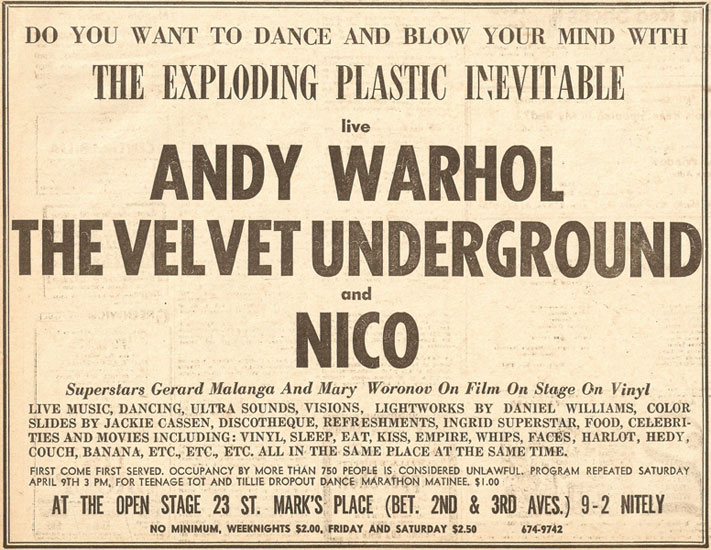
Village Voice ad April 7, 1966
Note at the bottom of the second ad of this event, sometimes described as a drugged-out evening of degeneracy, it's noted that the program will be repeated Saturday, April 9th 3 PM, for "Teenage Tot and Tillie Dropout dance marathon matinee" for £1.00. Presumably this was for the younger crowd.
The E.P.I. was similar to ANDY WARHOL, UP-TIGHT (see February above), featuring The Velvet Underground, Nico, Warhol's films, and various Factoryites dancing onstage. Although people referred to it as happening at the the Dom, it actually took place at the "Open Stage" in the hall above the Dom Bar. "Bob" John Liikala ran the Open Stage. He had previously shown some of Warhol's films at the Bridge Theater across the street from the Dom where he managed an underground film program.
"Bob" John Liikala [October, 22/26, 2008]:
I had the "lease" arrangement with Stanley, who ran the Bar at the Dom and managed affairs for the entire Polish Hall. I guess collectively the building was owned by the Polish cultural organization and used to use it for weddings etc., Stanley, I assume, was Polish origin and as a result had the bar, although back in 1962 or so I only went to his bar on Ave.B, an artists hangout - we weren't even aware of the Dom then.
At that time I was managing the underground film program across the street at the Bridge Theater as well as a variety of experimental stage intermedia productions plus the art gallery at the Bridge. I knew Paul Morrisey and showed some of Warhol's films.
Empire helped kill film censorship in NYC. When I took it down [to the censors] to set their required "seal" of approval, their eyes were spinning after watching it in shifts - sending out for coffee - they shouted 'never...never...bring us another thing like that!' A few months later film censorship went out!
My only association with Warhol at the Bridge was to show Empire, The Bridge was self contained, not an extension of the Film-makers Cinematheque during my period, although a year prior to my arrival Jonas Mekas had a hand in running film there as an extension of the Film-maker's Co-op.
In addition to running the underground film program and art gallery at the Bridge theater on St. Mark's Place I concurrently ran the "Open Stage" across the street in the hall above the Dom Bar, no one referred to my site as the Dom, it was the "Open Stage."
Just to set history straight, "Dom Inc." did not premiere the [E.P.I.] event, it didn't even exist. Probably Stanley's name is in the fine print on "Dom Inc." He gave me a personal hint a week or so before that 'business shouldn't get in the way of our 4 year friendship!' I also was friends with Rudi Stern and Jacki Cassin, who did light shows for my Open Stage events. Rudi eventually had the Neon Forever Galleries in NYC and L.A. and just died a few years ago.
Rudi Stern and Jacki Cassin were collaborating with me on "light shows" at Open Stage with various bands I'd invite personally after seeing them in local cafe gigs. One did Indian Raga's mixed with R&R which I loved, since I dug Ravi Shankar and many other forms. Open Stage was a very open and available venue for experiments, as was the Bridge and later Group 212 in Woodstock.
Anyway, Warhol may have paid someone $ for a month's lease, not me, I ran a box office on a % basis for a month or so, until Warhol's tricky business managers got the "lease" out from under me.
Look at the premiere poster, top line "OPEN STAGE', That's my operation and my quick and dirty poster, same as the spray-painted banner that I rushed together to hang on short notice."
Open Stage poster by "Bob" John Liikala
According to Sterling Morrison, it was while the Velvets were playing the Dom that they started wearing dark glasses onstage - "not through trying to be cool but because the light-show could be blinding at times." (UT54) Danny Williams, a Factory regular who did the lights for the E.P.I. shows and who had a brief affair with Warhol, would mysteriously disappear later in the year. He was presumed drowned off the coast of Cape Cod. His clothes were found by the side of his parked car near the coast. Although his body was never found, it was thought to be a suicide. (GMW111)
Warhol's E.P.I. shows as the Dom turned out to be extremely popular - entry was $6 and they made $18,000 in the first week.
Sterling Morrison:
"But our actual salary from Paul Morrissey, who handled the business side for Andy, was five dollars a day, for cheese or beer at the Blarney Stone. He had a ledger that listed everything, including drug purchases - $5 for heroin. When the accountant saw it, he said 'What the hell is this?':" (LR122)
According to Gerard Malanga and Victor Bockris, all the people contributing to the show were paid the same amount - Lou Reed got the same for playing as Gerard did for dancing or Danny Williams for doing the lights: "On an average night at the Dom they would be paid a hundred dollars apiece". (UT52)
At the same time that the VELVETS were playing at the Dom, Andy’s film, MY HUSTLER was playing uptown at the Film-Makers’ Co-op and Warhol's silver helium-filled pillows and yellow and pink cow wallpaper was being shown at the Castelli Gallery. (POP162)
The final performance of The Exploding Plastic Inevitable at the Dom took place on April 30, 1966. (UT57) While performing at the Dom, Lou Reed's Gretch guitar and record collection was stolen. (LR124)
1966: ANDY WARHOL MEETS RONNIE CUTRONE.
Ronnie Cutrone lived in the Velvet's apartment which was subleased from TOM O'HORGAN who would later direct the musical Hair. Cutrone would eventually work for Andy for ten years as his full-time painting assistant from 1972-82.
1966: ANDY WARHOL DISCOVERS ERIC EMERSON.
Eric Emerson, 1973 (Photo: ©Chris Stein) (Morrison Hotel Gallery)
Andy Warhol noticed Eric Emerson dancing at the Dom - “...a small, muscular blonde kid made a ballet leap that practically spanned the dance floor". (POP212) Eric Emerson’s mother had sent him to ballet school as a youngster, while his father worked as a construction worker in New Jersey. Both Ronnie Cutrone and Gerard Malanga already knew Eric before Andy Warhol noticed him at the Dom. Eric had got married two years previously to someone he met at a party in Los Angeles. He fell in love instantly and they drove to Las Vegas the same night for a quick wedding.
Eric Emerson:
“I got really attached to my wife, and when she went out free-loving the way I did, I got crazy and went through a heavy gay scene for awhile...” (POP212)
See: "Wonderboy: The life, loves and death of Eric Emerson," here.
1966: EDIE SEDGWICK FALLS APART.
According to Ultra Violet, Edie Sedgwick, “falling apart” and “hooked” on drugs “goes through eighty thousand dollars in six months...” ONDINE became her French maid “serving her drug paraphernalia and a saucer filled with speed” for breakfast. “Desperate for money, Edie steals English antiques and pieces of art from her grandmother’s elegant apartment and sells them to buy drugs.” (UV211) “Dealing drugs, she gets busted, goes to jail briefly, and is put on probation for five years”. (UV212)
1966: ANDY WARHOL PRODUCES THE VELVET UNDERGROUND LP.
The original "peel slowly and see" album cover for The Velvet Underground and Nico - produced by Andy Warhol
Warhol invested some of the Dom money (along with an investment by NORMAN DOLPH, a former Columbia Records sales executive) to produce The Velvet Underground and Nico album. The Cameo-Parkway Studios on Broadway were rented for $2,500 for three nights. Lou Reed did not want Nico on the album and Nico wanted more songs to sing.
John Cale:
"Lou was paranoid and eventually he made everybody paranoid."
Andy Warhol:
"The whole time the album was being made, nobody seemed happy with it."
Lou Reed:
"Andy made a point of trying to make sure that on our first album the language remained intact. He would say, 'Make sure you do the song with the dirty words, don't change the words just because it's a record." (LR129-30)
The album was turned down by every record company in New York.
When Warhol and The Velvet Underground went Los Angeles to perform at the Trip, they met with various record companies to try and flog the album. Ahmet Ertegun rejected it, saying "no drug songs". Elektra rejected it, saying "no violas". (UT68)
Tom Wilson at Columbia (who was a friend of Nico) was interested and told the band to wait until he moved to MGM so that he could release them on the Verve label. They were eventually signed by MGM who also signed The Mothers of Invention at the same time. Tom Wilson suggested they make the album more commercial by adding more Nico songs and releasing one as a single. Lou complies by writing 'Sunday Morning', which Wilson later produced for the banana album. Andy suggested making it a song about paranoia which Lou did with lyrics like 'Watch out, the world's behind you, there's always someone watching you...' (LR135) Lou insisted on singing the song himself on the recording even though Nico sang it at live performances.
Although contracted to receive 25% of the Velvet's earnings, Andy Warhol never received any money from the album sales due to legal complications with the contract which failed to state what royalties the band would receive. (LR135)
MAY 3 - c. MAY 5, 1966: THE VELVETS PLAY THE TRIP.
Poster for the gig at the Trip
According to Callie Angell in Andy Warhol Screen Tests: The Films of Andy Warhol Catalogue Raisonné, Vol. One, "The Velvet Underground was booked to play at the Trip from May 3 to May 20, 1966. (AD307fn365) According to Victor Bockris in Uptight: The Story of the Velvet Undergound, "Charlie Rothchild booked the Exploding Plastic Inevitable into the Trip May 3 - 29. (UT65) According to the poster (pictured above) they were performing May 3 - 18. The May 18th date is backed up by an article about the show in The Los Angeles Free Press ("Andy Warhol and the Night on Fire" by Paul Jay Robbins) that mentions that the EPI is "at the Trip on Sunset Strip until May 18." (CH15) A copy of the Free Press article can be found in All Yesterdays' Parties: The Velvet Underground in Print, 1966-1971
. A radio advert for the show (along with other Velvet Underground related recordings) can be downloaded here.
The show was cancelled before the advertised end date of its run. According to Callie Angell "On May 12, the club was temporarily closed when Virgina Greenhouse, wife of one of the operators, sued to collect a $21,000 over-due promissory note, and a representative of the sheriff's office delivered a writ of attachment to the club. Warhol and the Velvet Underground filed a claim for their fee with the local musicians' union, and were forced to wait in Los Angeles for payment to arrive." (AD307fn365) According to Bockris, the club was "closed down by the Sheriff's office on their third day. The troupe stay in LA, hoping the club would re-open, and the musicians' union said if they stayed in town for the (union rules) duration of their engagement they would have to be paid the complete fee. They used the time to continue recording the first album." (UT67)
At the Trip, the Mothers of Invention featuring Frank Zappa opened for the Velvets and were cheered by the L.A. crowd. The Velvets, however, were greeted with boos. (UT65)
Lou Reed on Frank Zappa:
"He's probably the single most untalented person I've heard in my life. He's a two-bit pretentious academic, and he can't play rock'n'roll, because he's a loser. And that's why he dresses up funny. He's not happy with himself and I think he's right." (UT65)
Among the celebrities attending the opening night were JOHN PHILLIPS of the MAMAS AND THE PAPAS, RYAN O'NEAL, JIM MORRISON (who was a film student at UCLA) and CHER who commented that the Velvet's music would replace nothing, except perhaps suicide. (LR133) The reviews were terrible and on the third night the sheriff’s office shut the club down for disturbing the peace. They stayed in LA as Union rules stated that in order to be paid, they had to remain in Los Angeles, even if they didn't perform. (MW23-4)
Warhol and most of his entourage stayed in the Castle in Los Angeles - "a large imitation-medieval stone structure... where many rock stars put up their entourages at $500 a week." (LD250) Bob Dylan had just stayed there with Edie Sedgwick. Photographer Nat Finkelstein and Velvet road manager Faison both stayed at the Tropicana instead of the Castle. Sterling Morrison joined them there after a week and a half in the Castle. (UT65/7) This is not be confused with the Castle that Eric Emerson stayed out around the time of San Diego Surf - see "Wonderboy: The life, loves and death of Eric Emerson," p. 2)
While in L.A. The Velvet Underground met Steve Sesnick who would become their manager in 1967. According to Sesnick, it was he who originally came up with the concept for the Exploding Plastic Inevitable. He also said that he was the person who arranged for The Velvets to perform at the Fillmore on May 26 and 27. However, this contradicted Andy Warhol who, in Popism, said (via Pat Hackett) that Bill Graham kept calling Paul Morrissey to set up the date. (UT69)
Steve Sesnick:
"My room-mate at the time was Tim Hauser who was the founder of the Manhattan Transfer. I told him I had come up with this space idea. All that was an idea of film and dancing and music - space music - and he was working at the time on doing 30s and 40s so we were very diametrically opposed in our personal interests. I mentioned it to Andy at a party at the Factory and he said, 'Oh gee, Steve, that sounds great. Do you think we can do it?' I said, 'Yes,' and we had a series of meetings with Brian Epstein on the telephone through Nat Weiss. Danny Williams was the only one I remember, besides Andy and Edie Sedgwick, who was in on the original meetings for this whole idea. Epstein and Nat Weiss were partners. Nat was his American attorney. I was very friendly with Nat for a number of years, prior to his even getting into music. So having access to him I went to speak with him about this idea and he passed it on to Brian, and Brian went nuts over it. He said it really is fantastic and they did want to get involved. But their idea of what it was and mine and Andy's were just really different." (UT70)
MAY 4, 1966: "SCREEN TEST POEMS" AT CORNELL UNIVERSITY.
The performance event was billed as "Screen Test Poems by Gerard Malanga, read by Rene Ricard. Films by Andy Warhol." Neither Warhol nor Malanga participated as they were in Los Angeles for the "Plastic Inevitable Show" - see above. The event was reviewed in the Cornell Daily Sun and it is not known whether it was ever performed anywhere else. "Screen Test Poems" was, however, listed as one of many performances/groups available for bookings in a special issue of Film Culture magazine which came out in late 1966 - Film Culture: Expanded Arts Bourse 43 (Winter 1966). It was described in the magazine as bringing together "the lives of many celebrities and personalities through the combined medias of poetry and film. For each screen portrait that appears on the screen a poem is read aloud, and the film (or films) is projected behind the reader." (AD280) A detailed technical description of the event, should anyone care to book it, was also included:
"The Screen Tests take up three 1200 foot reels, each appproximately forty-five minutes projected at silent speed. They are not projected simultaneously... The reading finished [sic] minutes after the last reel runs out... It would take at least 2 to 3 members of Malanga's entourage to work the projectors in various fashions of hand-held techniques at various points during the reading." (AD280)
MAY 26, 1966: THE EPI PLAYS SAN FRANCISCO.
"Pop - Op Rock Andy Warhol and his Plastic Inevitable with the Velvet Underground and Nico "Pop Girl of '66?" plus the Mothers [of Invention] at the Fillmore West in San Francisco" poster by Wes Wilson (note the absence of the word "exploding")
The Exploding Plastic Inevitable arrived in San Francisco to play for two nights at BILL GRAHAM's Fillmore Ball Room with the MOTHERS OF INVENTION and the early JEFFERSON AIRPLANE. The Warhol crowd hated the hippie culture of San Francisco. Bill Graham pulled the plug on the Velvets the second night when the band left the stage after leaning their instruments against the amplifiers creating a "barrage of sonic feedback".
Lou Reed:
"We had vast objections to the whole San Francisco scene. It's just tedious, a lie and untalented. They can't play and they certainly can't write... You know, people like Jefferson Airplane, Grateful Dead are just the most untalented bores that ever came up. Just look at them physically, I mean, can you take Grace Slick seriously? It's a joke! It's a joke! The kids are being hyped." (UT71)
While in San Francisco, the poet/playwright MICHAEL MCCLURE refused to sign a release for a film that Andy Warhol had made of McClure's controversial play The Beard. According to the Bockris biography of Warhol, although Michael McClure had originally agreed to the film and planned to sign a contract giving Warhol permission to make a film of it, McClure withdrew his permission on the advice of his lawyers and the play's director and Warhol made the film anyway - starring Gerard Malanga and Mary Woronov.
to filmography
After the second night in San Francisco Gerard Malanga was arrested in an all night cafeteria in North Beach for carrying an offensive weapon (his whip) and spent the night in jail. He had gone to the diner with Lou Reed and Nancy Worthington Fish, a friend of Warhol who was performing with The Committee. (UT73)
While In San Francisco, Lou Reed shot up some bad speed causing his joints to seize up and he was incorrectly diagnosed as having a terminal case of lupus.
Upon their return to New York, Lou Reed checked into Beth Israel hospital with a serious case of hepatitis and had a six week course of treatment. Nico left for Ibiza while the rest of the Velvets started rehearsing for an upcoming June booking in Chicago - a one week stint at Poor Richard's. ANGUS MACLISE returned as drummer and MAUREEN TUCKER switched to playing bass.
Gerard Malanga:
"Just before the Chicago gig, Andy, Angus MacLise and I went to visit Lou in the hospital, because Angus was going to play with the group in Chicago. I distinctly remember Lou telling Angus, 'Just remember you're only coming back for two weeks. You're on a temporary basis. I don't want you to get any idea that you're coming back into the group again." (UT74)
MAY 27, 1966: ANDY WARHOL MEETS RICHARD RHEEM.
Richard Rheem, 1966
Richard Rheem is described in the first volume of the Warhol film catalogue raisonne as "a young man from a prominent California family" who met Warhol at a party given by his uncle Bob Rheem and the artist/poet Liam O'Gallagher to celebrate the opening of the E.P.I. Warhol asked Rheem if he'd like to be in movies. After Warhol returned to New York, Rheem wrote him some letters and spoke to him on the telehone. Two letters from Rheem have been found in Andy Warhol's Time Capsule 79 - one dated July 27, 1966 and another dated September 7, 1966. (AD305) He arrived in New York around the beginning of October 1966 and a romance with Warhol ensued, with Rheem giving Warhol's address as his own (1342 Lexington Avenue) on a talent release dated November 7, 1966. Victor Bockris' biography of Warhol has them living together until the second week of December 1966. After they split up Rheem continued to write to Warhol on a friendly basis as letters from him have been found in Time Capsules 12, 19 and 10 from 1968 and 1969. (AD161)
In addition to being the subject of four Screen Tests, Rheem also appeared in The Bob Dylan Story, The Andy Warhol Story (as Gerard Malanga), Richard and Mary (with Mary Woronov), Since (as Governor Connelly), the colour version of Susan-Space, Ingrid and Richard, Mrs. Warhol, Tiger's Place and Richard and Mary II. (AD161)
JUNE 1966: ANDY AND HENRY DRIFT APART.
Warhol and HENRY GELDZAHLER drifted apart when Henry was made Commissioner for the Venice Biennale and did not tell Andy and also did not use his art in the show (using instead HELEN FRANKENTHALER, ELLSWORTH KELLY, JULES OLITSKI, and ROY LICHTENSTEIN).
Henry Geldzahler:
"I had to get out of there to save myself. It was so unattractive I walked away. There was one tense moment. There was a blackboard in the studio and I wrote: 'Andy Warhol can't paint any more and he can't make movies yet.' That was when he was between the two. But he never forgot that." (L&D256)
JUNE 1966: MAY WILSON MOVES.
Artist MAY WILSON moved first into the Chelsea Hotel, then into a studio apartment next to the hotel at 208 West 23rd Street. VALERIE SOLANAS would store the gun she would later use to shoot Andy Warhol on June 3, 1968 under May's bed in a laundry bag in the studio apartment. (RE/WSW)
JUNE 21 - JULY 3, 1966: THE VELVETS PLAY POOR RICHARD'S.
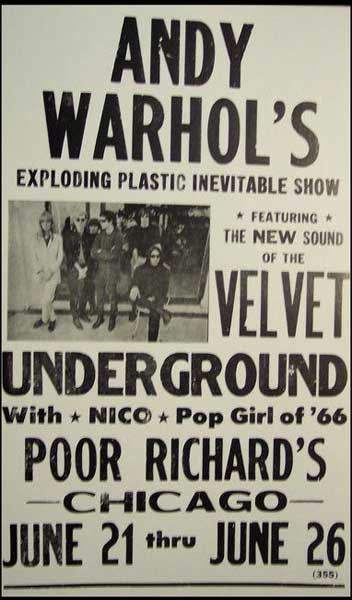
Poster for Poor Richard's
Held over at Poor Richard's
The performed at Poor Richard's in Chicago without LOU REED who was recuperating from hepatitis at Beth Israel Hospital. Although NICO was advertised to appear, she stayed in Ibiza instead.
Poor Richard's was a club inside an poorly ventilated old church in which the temperature rose to 106 degrees. (UT75)
Angus returned to play drums, Maureen played bass and STERLING MORRISON and JOHN CALE did vocals. INGRID SUPERSTAR replaced MARY WORONOV as Gerard Malanga's dance partner. DANNY WILLIAMS flew in from San Francisco to do the lights. Warhol was supposed to attend to do interviews but sent BRIGID BERLIN in his place. RON NAMETH filmed one of the shows.
The Chicago shows were so successful that the band were held over another week. Originally booked until June 26, they stayed until July 3, 1966. (UT75)
While in Chicago the band was also hired by Playboy to perform at an afternoon fashion show which was written up in their VIP magazine. They also appeared on Studs Terkel's TV show and did some radio shows. (UT76)
It was at the Poor Richard's concerts that SUSAN PILE first met GERARD MALANGA and the rest of the E.P.I. crowd. The following month, on her way to the Newport Folk Festival with a friend from high school, she stopped into the Factory to say hello and Gerard introduced her to Andy.
Malanga needed help pulling together his literary output, beginning with a special issue of Film Culture magazine. Susan contributed an essay and typed/proofed most of the other content.
When Susan moved to New York to study at Barnard College, she ended up working at the Factory (until approximately February of 1968) and transcribed some of the tapes that would be published as 'A: A Novel' by Andy Warhol. She also looked after Nico's son, Ari, when the Velvet Underground played two nights a week at the Gymnasium. (S)
Susan documented her activities at the Factory in weekly letters to her friend and co-conspirator Edward K. Walsh who dated each letter upon its receipt.
Susan Pile [July 26, 1966]:
"Dear Ed,
...Indeed, I did start working for ('lurking about' might be more accurate) Andy and Gerard at the Factory, but nothing has happened - it’s total Catatonia until the filming starts (very late usually - the Factory never opens until 2pm daily). They’re filming tomorrow night, and we get to watch...[color sequences for Chelsea Girls with line-up of Superstars]." (S)One of Susan's classmates at Barnard was Pat Hackett who would also later work for Warhol. Hackett co-wrote 'Popism' with Warhol and, after his death, edited The Andy Warhol Diaries, published in 1989.
c. END JULY 1966: TAYLOR MEAD HECKLES THE LIVING THEATER IN EUROPE.
Mead had left the U.S. in 1964 to live in Europe.
Jerome Hill's Amphitheater in Cassis - see "Jerome Hill and Charles Rydell," p. 2, here
From The Living Theatre: Art, Exile, and Outrage (London: Methuen Drama, 1997) by John Tytell:
"In July, the [Living Theater] company drove through the Alps, returning to Reggio Emilia to continue working on Frankenstein and to spend the hot nights under mosquito netting. At the end of the month, after packing the sets of The Brig and Frankenstein, the company boarded their old, beat-up buses for a long drive along the mediterranean coast to Cassis in Provence. There, they were met by poet Taylor Mead and the film maker Jonas Mekas, and quartered in unfinished buildings meant for French Algerians. In the nagging wind of the mistral - reputed to drive people mad - surrounded by stone-pocked hills, they performed Mysteries under the sky in a stone amphitheatre built by Jerome Hill, their host, the black sheep of an American railroad family, who had given the company $20,000 to help pay for their 1962 European tour. Taylor Mead found the performance "communal to the point of sameness." He was irritated by the frequency with which Julian kept repeating "End the war in Vietnam!" and began shouting "A bas les intellectuals!" and "Vive la guerre de Vietnam!" in response." (JT216)
Jonas Mekas (Warhol's film distributor and the founder of the Filmmaker's Co-op) who met the company in Cassis with Mead would, over the course of his career, make several films relating to productions of The Living Theater. He filmed the company's production of The Brig in 1964; filmed a production of The Living Theater's Frankenstein in the mid-sixties which he used for his 1996 film Memories of Frankenstein; and worked on his film Mysteries - another production of the The Living Theater - from 1996 - 2001. (JT3-4)/GY)
SUMMER 1966: INTERNATIONAL VELVET JOINS THE FACTORY.
SUSAN BOTTOMLY (INTERNATIONAL VELVET) was “the new girl in town.” (POP175) Her father was a district attorney in Boston and her family paid her rent at the Chelsea Hotel and gave her an allowance. (POP175)
Andy Warhol (via Pat Hackett in Popism):
“Gerard stayed with Susan at the Chelsea for the first couple of months she was in town, and all that time he was writing poems to her and about her. Her parents weren’t happy with her new ‘career’ - modeling in New York - and later on, when she was on the cover of Esquire, phototographed in a garbage can (‘Today’s Girl, Finished at 18’), they were really upset... but they went on supporting her, and she went on supporting lots of her friends.” (POP176)
SUMMER 1966: ANDY WARHOL SHOOTS THE CHELSEA GIRLS.
See Andy Warhol's The Chelsea Girls.
ca. SUMMER/AUTUMN 1966: BOB DYLAN'S MANAGER TAKES OVER THE DOM.
BOB DYLAN's manager AL GROSSMAN and Oliver Coquelin took over the Dom and renamed it the Balloon Farm.
PAUL MORRISSEY arranged for Nico to sing in a small bar underneath the Dom called Stanley's. (LR139) After a few weeks of Nico singing alone to tape recorded guitar solos by Lou Reed, Paul Morrissey hired unknown folk singer TIM BUCKLEY to accompany her, later replacing him with an unknown JACKSON BROWNE who Morrissey discovered sitting at the bar - Jackson Browne having come there to hear Tim Buckley. Browne ended up writing some of the tracks on Nico's first solo album, Chelsea Girl as well as performing on it. (UT86/90) Jackson Browne lived with Nico for awhile on Columbus Avenue at 51st Street. (UT106)
The Velvet Underground played the Balloon Farm (The Dom) in October.
AUGUST 31 - 4, 1966: THE EPI PLAYS PROVINCETOWN.
The Exploding Plastic Inevitable played the Chrysler Art Museum in Provincetown, Massachusetts. Steve Sesnick, who would later become the manager of The Velvet Underground after they were dropped by Warhol in 1967, arranged the dates. In addition to The Velvet Underground (consisting of Maureen Tucker, John Cale, Lou Reed and Sterling Morrison) and EPI regulars Gerard Malanga, Ronnie Cutrone, Mary Woronov, road manager Faison, Warhol assistant Paul Morrissey and Andy Warhol, the group also now included Susan Bottomly (aka International Velvet), her boyfriend, fashion illustrator David Croland - and Eric Emerson who stayed with Nico in Provincetown.
Poster for the Exploding Plastic Inevitable in Provincetown
The police interrupted one of the performances and untied Eric Emerson from a post (which he was strapped to in preparation for being whipped by Mary Woronov) in order to retrieve some belts and whips that were stolen from a leather store in Provincetown. (UT83)
There was also a problem with the landlord of the house that Warhol's entourage had rented in Provincetown. The toilets in the house had stopped up and Warhol's stars were throwing shit out the window.
And Eric Emerson stole a work of art from the town's museum "just to see if he could get away with it. Paul Morrissey had to act as a liaison between Eric and the Museum, restoring the painting in order to avoid having charges pressed." (UT84)
Gerard Malanga expressed his displeasure with direction that the EPI show was taking in a letter to Warhol that he wrote in his diary, but never sent. (UT82)
"Dear Andy,
It seems I'm always writing you letters to explain myself, my feelings, what's bothering me as you find it easy to say nothing, sometimes, when you know what you're thinking you shouldn't say or it is explained without words or without vibrations.
I thought the Provincetown show got off to a rough but very good start, until you were so kind enough as to let Susan and everyone else not directly connected with the show to get involved with Mary and I on stage. Also, it was unfortunate that Mary had to be dancing above me and not with me.
I want to make it clear to you that (1) I was dancing with The Velvets long before you signed them into a corporation empire, and even before you knew them; (2) that my dancing is an integral part of the music and the show as is your movies; (3) I do not represent a 'go go' dancer in the show but an interpretative-visual happening. You are slowly taking this away from me by allowing outside elements to interfere with my dance routines. Also Larry was supposed to have the spotlight on me when not projected on The Velvets. Instead, that spotlight wandered away from what was supposed to be seen happening on stage. On more than one occasion I found my flashlight missing and then discovered that Roger was dancing with it somewhere near the end of the show.
On more than one occasion I also discovered other people handling the strobes which were inconveniently placed on the stage. All this led up to Mary and me dancing in total darkness, at times. The only way this can be rectified for future shows is not to have troupe dancing but two people at a time. I am willing to take turns. From my vantage point on stage to have more than two dancers the show becomes a Mothers of Invention freak-out. I feel that you will do nothing in your almost absolute power to correct the mess you are responsible for, in which case I will if you won't.
Faithfully, Gerard" (UT82-3)
SEPTEMBER 1966: PAINTERS AND POETS DRIFT TO MAX'S.
According to Popism, it was around this time that the Factory crowd started going regularly to “a two-story bar/restaurant on Park Avenue South off Union Square that MICKEY RUSKIN had opened in late ‘65” called Max’s Kansas City. Previously, Mickey had a “place on East 7th Street called Deux Megots that later became the Paradox, and then he’d had the Ninth Circle, a Village bar with a format similar to what Max’s would have, and then an Avenue B bar called the Annex... at Deux Megots, he’d held poetry readings - and now painters and poets were starting to drift into Max’s.” (POP185)
SEPT. 15, 1966: THE CHELSEA GIRLS OPENS AT THE CINEMATHEQUE.
See "The Chelsea Girls," here.
AUTUMN 1966: STERLING AND JOHN CALE MOVE IN TOGETHER.
Sterling Morrison:
"In the Fall of 1966 John and I got a place on East 10th Street just east of First Avenue. Shortly thereafter, Lou [Reed] got his place on East 10th just west of First Avenue, so the three of us were living about 50 yards apart. We would have lived together if we could have found a place large enough. We were hanging around together day and night." (UT97)
SEPT. 1966: DANNY WILLIAMS DROWNS.
DANNY WILLIAMS, who had rejoined the EPI (minus Andy, Nico and Lou) in June for a week of shows in Chicago, drove to the coast while visiting his family in New England and never returned, his clothes reportedly found "in a neat pile by the car."(LD257) It was eventually presumed that he had swam into the sea and had drowned. His body was never found.
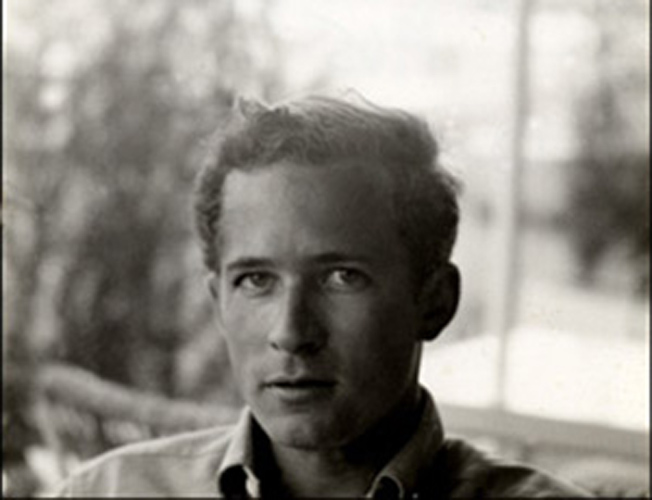
Danny Williams (from the film, "A Walk into the Sea")
When he first went missing, his family attempted to find him by ringing the Factory. Warhol's scriptwriter, Ronald Tavel, later recalled a phone call from Williams' mother trying to get in touch with Warhol to ask him about her son's whereabouts:
Ronald Tavel:
"My sense of the Factory... is caught in that filtered heat of the late summer, late afternoon sun falling through its streetside windows, and on Danny Williams at his desk, increasingly bizarre in appearance, his hair matted, his glasses broken, encounter by encounter progressively lost to amphetamine... And then one day Danny was gone. On September 5th I took a call at the Factory from his mother, asking anxiously if we had seen her son or knew of his whereabouts. 'Andy,' I relayed, 'she wants to talk to you. She's very worried.'
'Oh, he groaned, 'what a pain. He's a pain, now she is is. Tell her I'm not here.'
'She knows you're here: I just said I'll get you.'
He didn't respond... After I hung up on Mrs. Williams, by way of admonishing me, he concluded dismissively, 'I don't care where he is. He's just an amphetamine addict.'
Three days later, Gerard told me that he'd learned they found his car by the water, he wasn't sure where, a river in Connecticut or the ocean off Cape Cod, with all his clothes piled neatly beside it. Danny had drowned himself."
OCTOBER 5, 1966: ANDY WARHOL SHOOTS THE FRENCH BOB DYLAN.
Footage of Antoine and Nico in New York can be found on YouTube here.
The French singer Antoine (real name: Pierre Antoine Muracciolo), known as the French Bob Dylan, arrived in New York and was greeted at the airport by Nico holding a bunch of bananas. At the Factory Warhol gave him a poster featuring a peel-off banana and filmed (in color) Antoine, Nico and Susan Bottomly (International Velvet) sitting under the poster eating bananas. (The footage has become known as Nico/Antoine.) He also shot Antoine's black and white Screen Test. (AD30)
EARLY OCTOBER 1966: RICHARD RHEEM ARRIVES IN NEW YORK.
Rheem would become Warhol's boyfriend and appear in a number of films including four Screen Tests - see May 27th above. (AD161)
OCTOBER 10, 1966: MOST BEAUTIFUL WOMEN SHOWN AT CORNELL UNIVERSITY. (AD291)
OCTOBER 1966: EDIE SEDGWICK GETS BURNED.
The candles that EDIE SEDGWICK always had burning in her apartment on East 63rd Street started a fire in the middle of the night and she was rushed to Lenox Hill Hospital with burns on her arms, legs and back. (POP188)
OCTOBER 29, 1966. THE EPI GOES TO BOSTON.
The Velvet Underground and Nico performed as part of Warhol's Exploding Plastic Inevitable show at the Institute of Contemporary Arts in Boston Massachusetts. Warhol also exhibited paintings in an adjoining room.
Ronnie Cutrone and Ronna Page (aka Rona Paige) - the girl who Ondine slapped in The Chelsea Girls - joined Gerard Malanga onstage for the last number. (UT98)
Susan Pile, who was also part of the Warhol entourage, recalled the event in her weekly correspondence to Ed (aka Edward K. Walsh).
HALLOWEEN 1966: JACKIE CURTIS DOES DRAG.
Jackie Curtis dressed in full drag for the first time, with the help of Candy Darling and Holly Woodlawn. (HW297)
NOVEMBER 3 - 7, 1966: THE EPI TOURS THE MIDWEST.
The Exploding Plastic Inevitable show did a short tour of the Midwest, with Paul Morrissey acting as road manager. (On November 3rd, for instance, they played the Topper Club in Cincinnati. (AD291) Some of the venues paid less than $1,000 a night. Nico was now sleeping with John Cale. (LR141) Warhol did not accompany them on this trip. (GMW59-61) From the end of October through mid-December the EPI played various dates in the Midwest, the East Coast and Canada. (UT97)
NOVEMBER 12, 1966: THE E.P.I. PERFORM AT MCMASTER UNIVERSITY, HAMILTON, ONTARIO. (AD291)
NOVEMBER 1966:THE DOORS PLAY ONDINE.
The Doors came to New York for the first time and played at the nightclub, Ondine.
Andy Warhol:
“Gerard took one look at JIM MORRISON in leather pants just like his and he flipped. ‘He stole my look!’ he screamed, outraged." (POP189)
Jim Morrison had seen Gerard Malanga performing earlier that year at The Trip in L.A., as part of the Exploding Plastic Inevitable. Morrison was supposed to be the star of Andy Warhol's first "blue" (porn) movie. According to Warhol, Morrison had "agreed to bring a girl over and fuck her in front of the camera but when the time came, he never showed up.” (POP190)
NOVEMBER 20, 1966: ANDY WARHOL GIVES AWAY A BRIDE.
The event was called "The Mod Wedding." The bridal couple, Randi Rossi and Gary Norris won the wedding in a competition on WKNR radio. Films and psychedelic lighting were courtesy of Warhol's Exploding Plastic Inevitable. Music was by the Velvet Underground.
The unusual wedding ceremony included a man smashing a car with a sledgehammer and Warhol applying paint and ketchup to to a woman's paper dress while she was wearing it. Warhol's wedding gift to the couple was an inflatable copy of a Baby Ruth candy bar measuring five feet long. The couple was also invited to the Factory for a screen test. The wedding was part of the Carnaby Street Fun Festival in Detroit which also featured the Yardbirds, Gary Lewis and the Playboys, Sam the Sham and Dick Clark. (AWM47)
NOVEMBER 1966: WARHOL IS SUED FOR USING FLOWERS.
PATRICIA CAULFIELD, who took the photograph that Warhol used for his Flower paintings, brought a lawsuit against him. After a "long, costly court case", Warhol eventually agreed to give her several paintings and a percentage of all profits from future reproductions of the painting as prints. (LD260)
1966: SUSAN AND GERARD BREAK UP.
After breaking up with Gerard, Susan Bottomly (International Velvet) started seeing DAVID CROLAND. Andy Warhol had met David Croland “at a party Paraphernalia had for those big earrings he designed.” (POP178) Gerard Malanga started seeing model BENEDETTA BARZINI, the daughter of author LUIGI BARZINI. (POP176)
1966: HOLLY WOODLAWN ALMOST GETS A SEX CHANGE.
Holly went to the Johns Hopkins Medical Centre in Baltimore to get a sex change with money given to her by her (straight) boyfriend, Jack. When she found out that she had to wait a year, she used the money for a shopping spree instead. (HW96)
WINTER 1966: ANDY WARHOL FILMS KISS THE BOOT.
Andy Warhol filmed GERARD MALANGA and MARY WORONOV performing their whip dance at the Factory and called it KISS THE BOOT - after the lyrics of the LOU REED song Venus in Furs. (BN84)
to filmography
DECEMBER 1966: ANDY WARHOL DESIGNS ASPEN NO. 3.
Each issue of Aspen- the "magazine in a box" - had a different guest editor. The December issue was designed by Andy Warhol and David Dalton and looked like a box of FAB detergent. The issue contained a flip book which. when flipped in one direction, presented Jack Smith's Buzzards Over Broadway and, in the other direction, Andy Warhol's Kiss. (JS147)
Page from Aspen No. 3 (Source: Paddle8, here)
2ND WEEK OF DEC. 1966: ANDY WARHOL SPLITS UP WITH RICHARD RHEEM AND STARTS SEEING ROD LA ROD.
Andy Warhol and Rod La Rod (Photo: Stephen Shore)
According to the Victor Bockris biography of Warhol, during the second week of December, Warhol and Gerard Malanga were returning to Warhol's townhouse at around midnight when they encounted Rheem (called "Richard Green" in Bockris' account) with Randy Bourscheit who had starred in The Closet. When Warhol saw them together, he turned "bright red" and "blurted out" to Rheem, "What are you doing with him if you're my boyfriend". The next day Richard moved out and the locks to Warhol's home were changed. (LD263)
In Bockris' book, the day after Warhol threw Richard Rheem out of his townhouse he started seeing Rod La Rod. According to Gerard Malanga, Warhol's relationship with La Rod "appeared to be a physically violent relationship, but Rodney was always very corny about his physical overtures towards Andy. It wasn't like he slugged him, they were always love taps, or Andy pushing him away or trying to block the punches." (LD267-8)
Rheem kept in touch with Warhol. Friendly letters from Rheem to Warhol from 1968 and 1969 have been found in Time Capsules 10, 12 and 19.
DEC. 1966: ANDY WARHOL FILMS ALLEN GINSBERG AND ORLOVSKY.
Peter Orlovsky (L) and Allen Ginsberg, Paris, 1957 (Photo: Harold Chapman) (Source: The Allen Ginsberg Project, here.)
Warhol filmed the poet Allen Ginsberg and his boyfriend, Peter Orlovsky for their SCREEN TESTS.
Susan Pile [December 1966]:
"...Allen Ginsberg and Peter Orlovsky arrive at the Factory for their Screentests. I am introduced and they blow me (goodbye kisses) upon their departure, in the midst of another argument between Rene [Ricard] and Gerard with me in the middle. Everyone is at the Factory... Billy Linich insists that everyone leave because of the vice raid, and every one goes - Andy, Rodney, Mary, Gerard, Billy Smith and me--in the limousine.... We proceed to Il Mio at the Delmonico Hotel for a party with the Yardbirds, me very casually school-clothed and looking vile. Il Mio=ultra chic. Gerard is doing dying swans, and I have to dance with him...." (S)
Susan was told that Antononi originally wanted The Velvets for his movie Blow Up, but that the part went to the Yardbirds instead.
Ginsberg had originally met Orlovsky in December 1954 and they became lovers. Warhol had previously filmed them in COUCH.
Allen Ginsberg:
"I was interested in the films, the civil liberties and the beautiful boys he [Warhol] had. But they were unobtainable or in another realm of some sort. I didn't find any serious Angels there to talk to who wanted to know about poetry." (GAB331-2)

